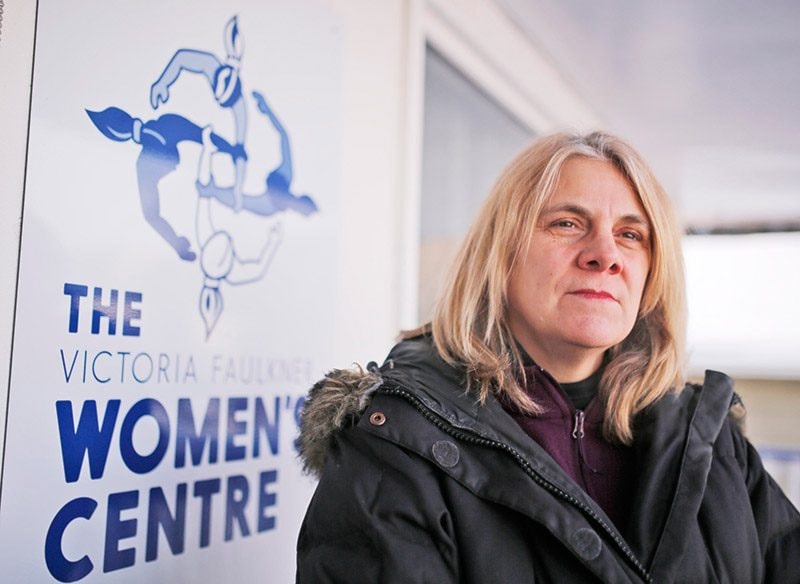Special to the News
The Yukon experiences four times the national average of sexual and domestic violence, yet many women may not understand how to properly report an incident or what happens when an incident is reported.
Collyn Lovelace, executive assistant at the Yukon Women’s Transition Home, said less than 10 per cent of victims in the Yukon choose to report an assault.
The process of reporting can be a complicated one, said Diane Petrin, a women’s associate with the Victoria Faulkner Women’s Centre in Whitehorse.
“The mechanisms, when set in motion with the RCMP, are almost unstoppable,” Petrin said. “Some women feel like they aren’t in control of their own choices anymore once it starts.”
When police are called, a file is automatically opened and an investigation into the incident takes place. Officers will then interview the victim and take down a testimony of events. The accused is then charged and may be arrested and held for up to 24 hours.
A no-contact order is often put in place at this time, forbidding the accused and the victim from seeing or speaking to each other. As the investigation proceeds, statements from possible witnesses and the accused are taken. If there is sufficient evidence to proceed the case goes to trial. It can sometimes take years to reach a verdict.
Once this process begins, the investigation cannot be stopped and the file remains open until the charges are either dropped or proceed to a court setting. This is true even if the woman later decides she does not want to carry the complaint forward.
This system is in place because sometimes women can be intimidated into dropping charges even when they don’t want to, Petrin said, but this policy can be a double-edged sword.
“Women can be intimidated and threatened (by the accused) financially or physically into dropping charges,” she said.
“Abusers will use whatever they can including threatening children, pets, slashing a woman’s tires…. In a way, the process is good, because it can’t be turned off, but then women get threatened even though nothing in their power can be done to stop the proceedings … and police do not always take breaches (of a peace bond) seriously.”
When a woman reports an incident, the RCMP will often send a pair of officers to her home to record a statement. This can be very difficult, Petrin said, and women sometimes feel their concerns are being dismissed due to the “black and white, business-like style,” the RCMP often take in these interactions.
“I don’t know if police fully understand the dynamic of this kind of violence,” she said.
Petrin added the situation can be doubly complicated when there are children in the home, as family and children’s services are automatically involved once a police report is made in such a case. There can also be mental health and social repercussions to reporting, which cause some women to hesitate, she said.
If a woman chooses not to report, she still has options available to her, Petrin says. Women’s advocates at the Victoria Faulkner Centre can help by going to the hospital with a woman and helping her find other sources of care.
“Some women choose to seek counselling on their own, work things out on their own,” she said. “And some people report and regret reporting, because then everyone knows everything and they have to tell their story over and over again, which can be very traumatic.”
Women can also use the third party reporting system available through Kaushee’s Place, says Lovelace. This system, adopted from a similar one used in Ontario and British Columbia, allows women to anonymously report an attack. They report the incident to a women’s advocate at the centre, either in person or over the phone and the file is sent to the police without triggering an investigation or charges. This allows police to see patterns in sexual assault cases, such as repeat offenders. The file is not made available for investigation unless the victim gives her consent.
Whitehorse General Hospital and the Kwanlin Dun Cultural Centre also offer a frozen rape kit service. A victim can have evidence taken in the case of a sexual assault using a rape kit, and then have that evidence frozen for up to a year until she decides what to do with it, Lovelace said.
“The choice to report or not is a very personal one,” Petrin said. “But we want people to know that whatever you choose, if you come to the Victoria Faulkner Women’s Centre, we believe you. The best care a woman can receive is to be believed, and not have her stories minimalized.”
Contact the Yukon News at editor@yukon-news.com
